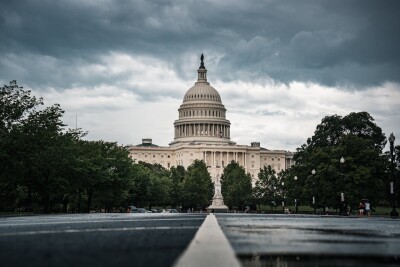On the 14th of February, 2012, a bill known as ‘H.R.658 - FAA Modernization and Reform Act of 2012’ became public law. This large and complex piece of legislation had a little over 1,000 sections and one of those, Section 336, continues to stir controversy to this day. For a full read of Section 336 please, click here.
The headline that introduces Section 336 is very explicit as it “prohibits the FAA Administrator from promulgating rules or regulations on model aircraft flown strictly for hobby or recreational purposes and meeting certain other criteria." According to many people associated with the model aircraft community, Section 336 is the reason why today’s drone pilots and generations of model-aircraft fliers have been able to fly and the industry has been able to flourish in the manner it has. Section 336 has allowed operators to enter the airspace without a Federal Aviation Administration (FAA) pilot’s license, equipage mandates, and regulatory paperwork. For the industry to continue to grow, many believe this needs to change.The FAA, Department of Defense, and certain members of Congress are actively looking to remove this controversial section citing “that something must be done to address the emergence of UAV / Drones / Multi-rotor Copters.” The argument over Section 336 is here to stay as lawmakers discuss drone security – and, specifically, S.2836, the “Preventing Emerging Threats Act,” recreational UAV operators are in the crossfire. The Commercial Drone Alliance and many other organizations have also argued that Section 336 needs to be repealed.Deputy Associate Administrator for FAA’s Security and Hazardous Materials Office Angela Stubblefield – the FAA representative who spoke at the most recent FAA Symposium about “the careless, the clueless, and the criminal,” drone operators – blamed Section 336 clearly for security issues. Stubblefield testified that FAA supports S. 2836, which would grant Department of Justice (DoJ) and the U.S. Department of Homeland Security broad authority to shoot down, disrupt, track, or otherwise disable drones deemed threatening, despite any other federal law to the contrary.However, she said that the FAA was hindered in making progress on drone security without clear laws requiring universal registration and remote ID and tracking: laws that would apply to all drone operators.“It is important to highlight three related policies that will greatly reduce the instances of hazardous UAS operations,” said Stubblefield. “…Universal requirements for UAS registration, remote identification, and compliance with basic airspace rules are necessary conditions for safe and secure UAS integration.”“The current exemption for model aircraft section 336 of the FAA Modernization and Reform Act of 2012 is the fundamental barrier to effective implementation of these policy changes, and presents an insurmountable challenge to the FAA and our national defense, homeland security and law enforcement partners as we work to enable the benefits of UAS technology while maintaining safety and security for the American people.”While there’s a proposal in the House version of the 2018 FAA Reauthorization Act that would attempt to compromise on Section 336, creating a potential third category of operators that fly in low altitude airspace, Rep. Peter DiFazio came out strongly against that idea in the Roundtable discussion. DiFazio supports a repeal of Section 336 that would put all drone operators under FAA authority.“[The] confusion that we currently have will continue, because again, we’re dealing with individuals coming into the airspace who by and large are not Pilots; they’re not airspace users,” said DiFazio. “…that confusion will continue as long as we are unable to definitively and very clearly from the FAA say that all UAS have to meet certain requirements: registration, remote identification, and a basic set of safety rules … we would need to ensure that they operate their aircraft such that they’re not potentially causing a safety or security constraint that will wreak havoc in the system.”Gretchen West of the Commercial Drone Alliance said in a recent interview with Commercial UAV News that, “Section 336 was written several years ago, and the technology has changed dramatically since then. When you look at the statistics around how many drones have been registered, there are over a million drones that are recreational-focused, and roughly 800,000 of those do not fall under a community-based organization, which has caused concern across the Federal Government. Repealing or amending or changing 336 is not meant to burden the hobbyist community, but instead to help the drone industry at large to grow. Ultimately, registration is a mechanism for holding people accountable in case of an incident, but the bigger issue is around Remote Identification. It’s something that policy-makers talk about in terms of the ‘criminal, the careless and the clueless.’”The controversy over Section 336 is not expected to disappear any time soon and both groups are preparing for a long legislative session after the summer recess is over.Subscribe
The information you submit will be stored and used to communicate with you about your interest in Commercial UAV News. To understand more about how we use and store information, please refer to our privacy policy.
September 12, 2018
The Fight for Section 336 of The FAA Modernization Act Heats Up















Comments